| Member | Party | Years | Cong
ress | Electoral history |
|---|
| District created March 4, 1833 |

Edward A. Hannegan
(Covington) | Jacksonian | March 4, 1833 –
March 3, 1837 | 23rd
24th | Elected in 1833.
Re-elected in 1835.
Retired. |
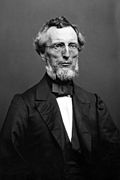
Albert S. White
(Lafayette) | Whig | March 4, 1837 –
March 3, 1839 | 25th | Elected in 1837.
Retired to run for U.S. senator. |

Tilghman Howard
(Rockville) | Democratic | March 3, 1839 –
July 1, 1840 | 26th | Elected in 1839.
Resigned. |
| Vacant | July 1, 1840 –
August 3, 1840 | |

Henry S. Lane
(Crawfordsville) | Whig | August 3, 1840 –
March 3, 1843 | 26th
27th | Elected to finish Howard's term.
Re-elected in 1841.
Retired. |

Joseph A. Wright
(Rockville) | Democratic | March 4, 1843 –
March 3, 1845 | 28th | Elected in 1843.
Lost re-election. |

Edward W. McGaughey
(Greencastle) | Whig | March 4, 1845 –
March 3, 1847 | 29th | Elected in 1845.
Lost renomination. |
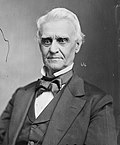
Richard W. Thompson
(Terre Haute) | Whig | March 4, 1847 –
March 3, 1849 | 30th | Elected in 1847.
Renominated but declined to run. |

Edward W. McGaughey
(Rockville) | Whig | March 4, 1849 –
March 3, 1851 | 31st | Elected in 1849.
Lost re-election. |
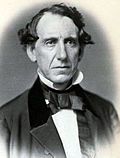
John G. Davis
(Rockville) | Democratic | March 4, 1851 –
March 3, 1855 | 32nd
33rd | Elected in 1851.
Re-elected in 1852. [a]
Lost re-election. |
Harvey D. Scott
(Terre Haute) | People's | March 4, 1855 –
March 3, 1857 | 34th | Elected in 1854.
Retired. |

John G. Davis
(Rockville) | Anti-Lecompton
Democratic | March 4, 1857 –
March 3, 1861 | 35th
36th | Elected in 1856.
Re-elected in 1858.
Retired. |

Daniel W. Voorhees
(Terre Haute) | Democratic | March 4, 1861 –
February 23, 1866 | 37th
38th
39th | Elected in 1860.
Re-elected in 1862.
Lost contested election. |

Henry D. Washburn
(Clinton) | Republican | February 23, 1866 –
March 3, 1869 | 39th
40th | Won contested election.
Re-elected in 1866.
Retired. |

Godlove S. Orth
(Lafayette) | Republican | March 4, 1869 –
March 3, 1871 | 41st | Redistricted from the 8th district and re-elected in 1868.
Retired. |

Mahlon D. Manson
(Crawfordsville) | Democratic | March 4, 1871 –
March 3, 1873 | 42nd | Elected in 1870.
Lost re-election. |

Thomas J. Cason
(Lebanon) | Republican | March 4, 1873 –
March 3, 1875 | 43rd | Elected in 1872.
Redistricted to the 9th district . |

Franklin Landers
(Indianapolis) | Democratic | March 4, 1875 –
March 3, 1877 | 44th | Elected in 1874.
Lost re-election. |

John Hanna
(Indianapolis) | Republican | March 4, 1877 –
March 3, 1879 | 45th | Elected in 1876.
Lost re-election. |

Gilbert De La Matyr
(Indianapolis) | Greenback | March 4, 1879 –
March 3, 1881 | 46th | Elected in 1878.
Lost re-election. |

Stanton J. Peelle
(Indianapolis) | Republican | March 4, 1881 –
May 22, 1884 | 47th
48th | Elected in 1880.
Lost contested election. |

William E. English
(Indianapolis) | Democratic | May 22, 1884 –
March 3, 1885 | 48th | Won contested election.
Retired. |

William D. Bynum
(Indianapolis) | Democratic | March 4, 1885 –
March 3, 1895 | 49th
50th
51st
52nd
53rd | Elected in 1884.
Re-elected in 1886.
Re-elected in 1888.
Re-elected in 1890.
Re-elected in 1892.
Lost re-election. |
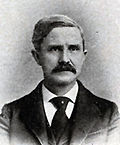
Charles L. Henry
(Anderson) | Republican | March 4, 1895 –
March 3, 1897 | 54th | Elected in 1894.
Redistricted to the 8th district . |

Jesse Overstreet
(Indianapolis) | Republican | March 4, 1897 –
March 3, 1909 | 55th
56th
57th
58th
59th
60th | Redistricted from the 5th district and re-elected in 1896.
Re-elected in 1898.
Re-elected in 1900.
Re-elected in 1902.
Re-elected in 1904.
Re-elected in 1906.
Lost re-election. |

Charles A. Korbly
(Indianapolis) | Democratic | March 4, 1909 –
March 3, 1915 | 61st
62nd
63rd | Elected in 1908.
Re-elected in 1910.
Re-elected in 1912.
Lost re-election. |

Merrill Moores
(Indianapolis) | Republican | March 4, 1915 –
March 3, 1925 | 64th
65th
66th
67th
68th | Elected in 1914.
Re-elected in 1916.
Re-elected in 1918.
Re-elected in 1920.
Re-elected in 1922.
Lost renomination. |

Ralph E. Updike
(Indianapolis) | Republican | March 4, 1925 –
March 3, 1929 | 69th
70th | Elected in 1924.
Re-elected in 1926.
Lost re-election. |
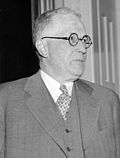
Louis Ludlow
(Indianapolis) | Democratic | March 4, 1929 –
March 3, 1933 | 71st
72nd | Elected in 1928.
Re-elected in 1930.
Redistricted to the 12th district . |

Arthur H. Greenwood
(Washington) | Democratic | March 3, 1933 –
January 3, 1939 | 73rd
74th
75th | Redistricted from the 2nd district and re-elected in 1932.
Re-elected in 1934.
Re-elected in 1936.
Lost re-election. |

Gerald W. Landis
(Linton) | Republican | January 3, 1939 –
January 3, 1949 | 76th
77th
78th
79th
80th | Elected in 1938.
Re-elected in 1940.
Re-elected in 1942.
Re-elected in 1944.
Re-elected in 1946.
Lost re-election. |

James E. Noland
(Bloomington) | Democratic | January 3, 1949 –
January 3, 1951 | 81st | Elected in 1948.
Lost re-election. |

William G. Bray
(Martinsville) | Republican | January 3, 1951 –
January 3, 1967 | 82nd
83rd
84th
85th
86th
87th
88th
89th | Elected in 1950.
Re-elected in 1952.
Re-elected in 1954.
Re-elected in 1956.
Re-elected in 1958.
Re-elected in 1960.
Re-elected in 1962.
Re-elected in 1964.
Redistricted to the 6th district . |

John T. Myers
(Covington) | Republican | January 3, 1967 –
January 3, 1997 | 90th
91st
92nd
93rd
94th
95th
96th
97th
98th
99th
100th
101st
102nd
103rd
104th | Elected in 1966.
Re-elected in 1968.
Re-elected in 1970.
Re-elected in 1972.
Re-elected in 1974.
Re-elected in 1976.
Re-elected in 1978.
Re-elected in 1980.
Re-elected in 1982.
Re-elected in 1984.
Re-elected in 1986.
Re-elected in 1988.
Re-elected in 1990.
Re-elected in 1992
Re-elected in 1994.
Retired. |

Edward A. Pease
(Terre Haute) | Republican | January 3, 1997 –
January 3, 2001 | 105th
106th | Elected in 1996.
Re-elected in 1998.
Retired. |

Brian D. Kerns
(Prairieton) | Republican | January 3, 2001 –
January 3, 2003 | 107th | Elected in 2000.
Redistricted to the 4th district and lost renomination. |

Julia Carson
(Indianapolis) | Democratic | January 3, 2003 –
December 15, 2007 | 108th
109th
110th | Redistricted from the 10th district and re-elected in 2002.
Re-elected in 2004.
Re-elected in 2006.
Died. |
| Vacant | December 15, 2007 –
March 11, 2008 | 110th | |

André Carson
(Indianapolis) | Democratic | March 11, 2008 –
present | 110th
111th
112th
113th
114th
115th
116th
117th
118th
119th | Elected to finish his grandmother's term.
Re-elected in 2008.
Re-elected in 2010.
Re-elected in 2012.
Re-elected in 2014.
Re-elected in 2016.
Re-elected in 2018.
Re-elected in 2020.
Re-elected in 2022.
Re-elected in 2024. |





































